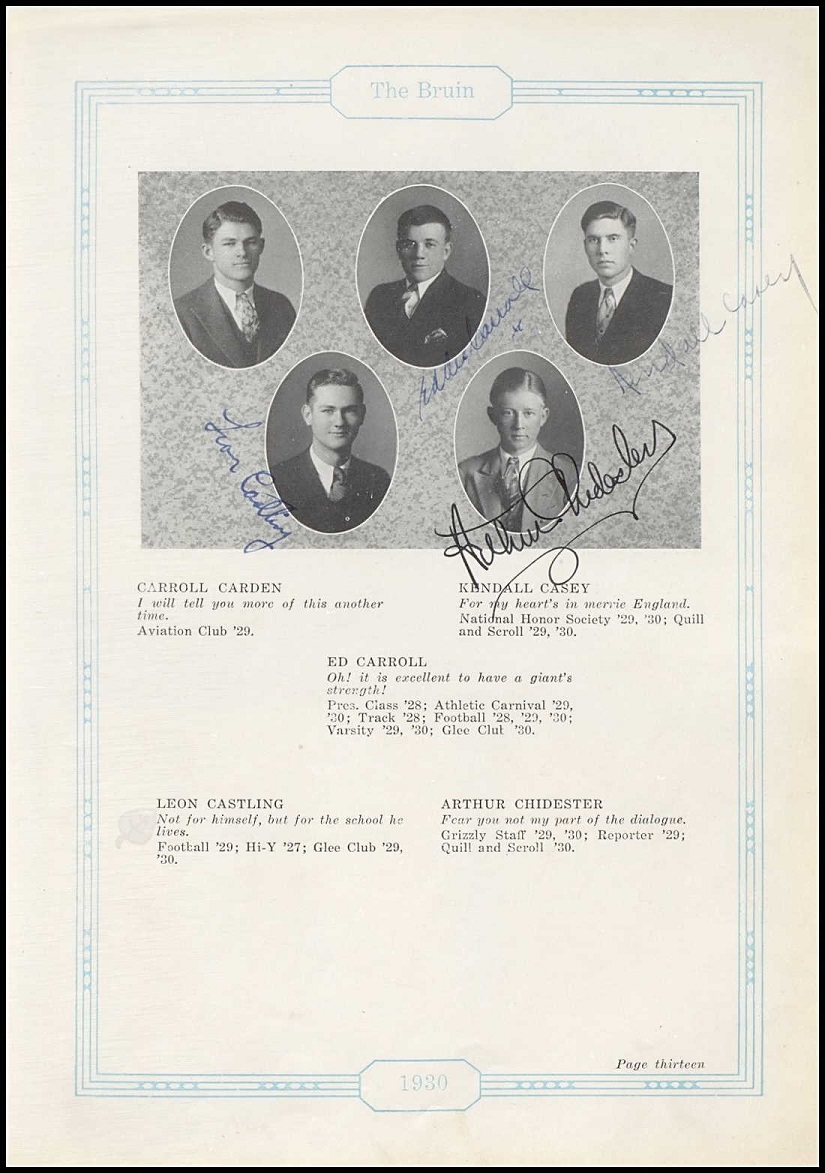Arthur Adolph Chidester
<1913-1950
Purple Heart Medal, Legion of Merit Medal, Air Medal, Bronze Star Medal
Marine Lt. Col. Arthur Aldoph Chidester was born Sep 1, 1913 in Fort Smith, Ar. to
Arthur Price & Lydia Henrietta Anna Scholze Chidester married to Miss Helen Fay Henton.
While serving in Korea, Attached to Headquarters, 1st Marine Division, he was wounded, captured November 29, 1950
and was presumed dead on January 14, 1954 while a Prisoner of War.
His remains were not recovered. He has a memorial marker in Forest Park Cemetery in Fort Smith, Ar. with
his brother 1st Lt. Randall D. Chidester who died in 1944, WWII.

http://www.wargamer.com/article/1519/Historical-Article-Task-Force-Drysdale?page=2
Task Force Drysdale - November 29, 1950
The other half, or the "tail" of the column was cut off both in front and behind. Lt. Col. Arthur A Chidester,
Assistant Divisional logistics officer, took command of those who were trapped with him. He quickly tried to
turn his force around and head back to Koto-Ri. The Chinese had anticipated that and blocked the road behind them.
Sixty-one British commandos, nearly 100 marines, and most of Company B, 31st infantry were among those now trapped
in the rear.
They had no armor and nothing heavier than light mortars and medium machine guns. Still they tried to fight their way back.
Receiving word of the plight of the task force, Colonel Puller immediately dispatched a tank force of a dozen Pattons from
Koto-Ri to relieve them. The Chinese had anticipated such a move and used the cover of approaching darkness to stab at
the tank columns, causing them to turn back.
The remaining troops of the tail of what had been Task Force Drysdale were soon split up into four perimeters. The largest
defensive position was initially made up of about 140 men. When Chidester was badly wounded, the command was taken by Major
John N. McLaughlin. They fought off the Chinese throughout the night, but by 4:30 in the morning were down to less than eight
rifle rounds per man. Over half of the men in the initial group were dead or wounded, some critically.
Another force some two hundred yards to the south consisted of a mix of men from Baker Company and a few marines. They were
holed up in the ditches alongside the highway. Still another group another fifty yards to the south of them commanded by
Captain Michael Capraro, the 1st Marine Division's public information officer. With him were about another ninety men,
mostly clerks and technicians. The group furthest to the south soon split up into two separate groups, each one finding
its way slowly back to Koto-ri by midnight of the 29th.
The Chinese had focused their attention on the largest of these four groups, commanded by McLaughlin. By now they had
surrounded it completely. As the day began to come to an end, they demanded surrender. McLaughlin sent back a message
demanding their surrender. It was pure bluff, however, and the Chinese knew it. By the dawn of the next day, McLaughlin
entered into negotiations with the Chinese. The group finally surrendered Chinese. Even though the Chinese had promised
care for the seriously wounded, they were given little attention once the surrender was complete. They did, however, allow
them to be placed inside a small Korean house to have some shelter from the elements. During the night the Chinese moved
back into the hills allowing the survivors to get back with the wounded to Koto-Ri.
Task Force Drysdale had been a costly investment with little result, despite the valor of its members. The only good thing
that had come of it was the fact that most of the Royal Marines and Marine Company G did make it through to Hagaru. The men
and the tanks that did arrive there proved to be a valuable asset in the breakout that began the next day.
No one can doubt the valor of the men of Task Force Drysdale. Their courage in a most difficult situation was not enough,
however, to stem the massive Chinese avalanche of humanity that poured into North Korea in the winter of 1950.
*******************************************
Northwest Arkansas Times (Fayetteville, Arkansas - Fri. Jul 30, 1943
It was a University of Arkansas graduate, Major Arthur Chidester of Fort Smith whom President Roosevelt made his
personal aide as a resident of the White House and whom he then sent as his personal emissary on a world flight to the
several War Fronts, with return by was of South and Central America. (His brother, Lieut Randall David Chidester
is now rendering excellent service in Alaska. He was a ROTC graduate of 1940.
********************************************

Fort Smith High School

|
| |